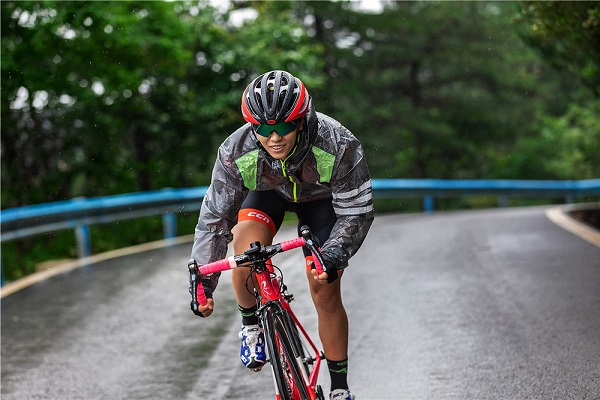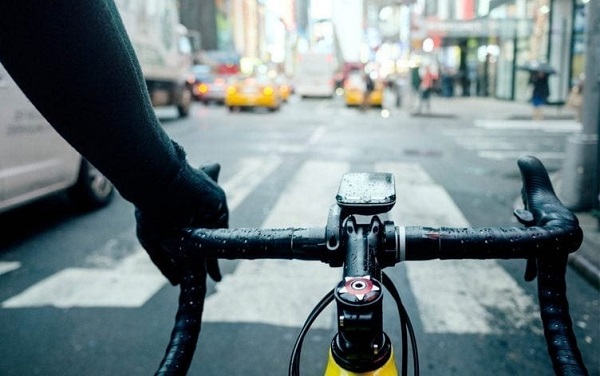
17 Apr 10 Tips for pedaling on rainy days
Riding a bike on a rainy day can be a daunting task. The roads may be wet, and it can rain hard enough to make them slippery. However, there are ways to avoid accidents while riding in the rain. The rainy season doesn’t have to become the time to put your bike away. If you have the right equipment and take the necessary measures, you can continue cycling all year long.
If you’ve never ridden a bike in the rain, then you’re probably not alone. But it doesn’t have to be so scary. While biking in the rain is no fun, there are some tips and tricks that can help you get through it without getting soaked.

1. Wear appropriate clothing
In rainy weather, it is recommended to always carry a light raincoat. There are sets of jackets, pants and shoe protectors or if you prefer, you can opt for the classic poncho. Keep reading https://kbsm.org/how-to-deep-clean-a-road-bike/
Ponchos can be an inexpensive alternative and they work very well, since if you place them on the handlebars, you can achieve very good coverage. However, in very windy conditions, they can be a bit cumbersome and in waterlogged situations, they do not offer good leg protection. This is the most practical solution in light rain.
The set of pants, jacket and shoe protector, will offer greater protection in more extreme rain conditions. As it is more specialized equipment, the investment required is likely to be higher. Keep reading: Women’s bike size chart
2. Dry yourself well when you arrive at your destination
If you don’t want to get sick, make sure you are dry and warm once you arrive at your destination. In short routes, there is not much problem, since you can wait for the rain to stop or decrease in intensity. However, when the journey is long, no matter how light the rain is, one always gets a little wet.
When your journeys are long and there is no way to escape the rain and arrive at your destination on time, the recommendation is to bring a change of clothes. Although your waterproof gear is effective, you have to consider that it will make you perspire more. In addition to the humidity, you should also consider the bad smell if you do not dry off and put on dry clothes.
3. Watch your braking distance
On rainy days the wheels, and even the discs, accumulate excess water and more dirt from the road, affecting the effectiveness of braking.
In these cases, it is recommended to brake lightly, just touching the rings or discs, so that the shoes remove some of the excess water from the braking surface.
After this, you can apply more pressure to be able to brake without problems. Always keep in mind that you will need a greater distance to reach a complete stop.
4. Lower the tire pressure
It is enough to reduce about 10 PSI so that your tires have a better grip on a wet surface. At lower pressure, these will have a greater deformation on their rolling surface, increasing contact area and grip with the ground.
Be careful not to lower the pressure too much since rolling a tire with too little pressure will damage it and make it easier for objects to get embedded in it, increasing the probability of suffering a puncture.
5. Avoid puddles
For many people, speeding through puddles can be fun. The downside is that you never know what is under the water mirror.
More than just a puddle, it can be a pothole that is completely covered by water. Hopefully, you will only end up soaked, but in more serious cases, you could seriously injure yourself, plus you could damage your wheel.
6. Stay away from oil stains
Especially with the first rains, the oil from cars impregnated on the pavement tends to rise to the surface, forming multicolored traps.
These stains are quite slippery and you should do your best to avoid them. In some cases, they are unavoidable. If you go over one of these oil stains, do not brake or make sudden changes of direction. Follow your path in a straight line.
7. Use fenders
The fenders, fenders or splash guards are a super important accessory in the rainy season. Its function is to prevent the tire from splashing the water that adheres to its surface, keeping your legs and back clean.
There are different types of fenders for different types of bikes and needs. They are fixed or temporary. Find one that works with your bike and avoid arriving at work or school with a black spot on your back.
8. Keep the chain clean
The bike chain collects debris from the ground at all times. However, this problem intensifies in the rainy season. With normal chain movement, these particles increase wear on both the chain and the overall powertrain.
For this reason, in the rainy season, it is important to keep the chain clean and well lubricated at all times. There are some special lubricants for wet conditions. These types of lubricants, although they offer better protection to the chain, trap more dirt, so you will need to be very careful when cleaning the chain.
9. Use a good set of lights
Keeping yourself visible through lights and brightly colored clothing is a recommendation for all occasions.
In rainy conditions, the visibility and braking time of other vehicles is reduced. For this reason, a good set of lights will help us to be seen from a greater distance.
10. Protective glasses
It is recommended to use glasses in order to avoid that some garbage, or in this case, the drops enter our eyes and affect our vision. Due to the reduced visibility on cloudy days, the ideal is for the lenses to be clear or yellow.
Taking these tips into consideration, you can continue to enjoy your bike even in the rainy season. Remember to take extreme precautions and circulate responsibly at all times.
And if it is a storm, do not risk it. Wait for it to dim or stop. If you are in a flood zone, wait for the water level to drop.


Sorry, the comment form is closed at this time.